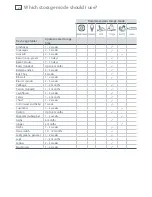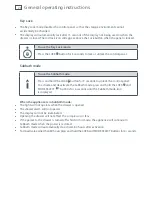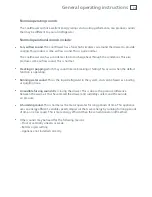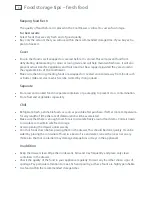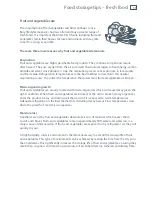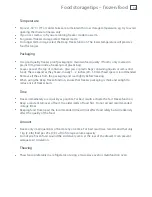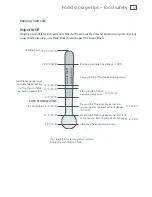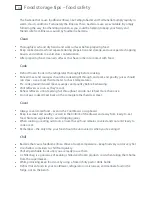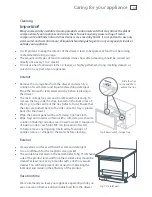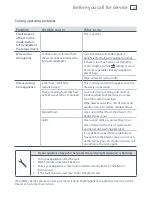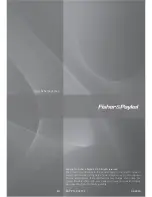
36
Food storage tips – fresh food
How the Humidity Control System (HCS) extends the storage life of fruit and vegetables
A specially designed lid seals the storage bins to create a controlled micro-climate. The lid has
the following unique features:
It completely seals off the bins from the rest of the drawer. The respiration of fruit and vegetables
create a high humidity environment in the bin and the lid traps most of this moisture in the bin,
preventing them from drying out.
It allows the temperatures in the bin to remain between 0 – 4°C / 32 – 39°F. These temperatures
are required to slow down respiration and the growth of micro-organisms.
It has long narrow grooves on the underside to capture and retain moisture given off from
the stored produce. This prevents the moisture from dripping back down onto the fruit and
vegetables which would cause them to rot.
The storage life of fruit and vegetables varies enormously, being influenced by the maturity and
quality of the produce at purchase and also the particular variety.
You can change the environment your fruit and vegetables are stored in simply by pressing the
humidity control button.
Temperature sensitive fruit and vegetables
Not all fruit and vegetables enjoy the same temperature. For some, temperatures that are too
cold can actually cause damage to flavour, texture and freshness. For example chill injury can
result in watery, tasteless tomatoes, stringy avocados and discoloured bananas.
It is important to care for these food items and Pantry mode does just that. It provides a cool
(12°C / 54°F) environment ideal for temperature sensitive foods. This temperature also allows
fruit to ripen slowly under controlled conditions.
Some examples of temperature sensitive produce best stored
using Pantry mode:
Tomatoes
■
■
Cucumber
■
■
Avocado
■
■
Bananas
■
■
For more examples refer to page 16.
Points to remember:
Fruits and vegetables not fully ripe when purchased will have a longer storage life especially
■
■
when stored on Fridge or Pantry mode.
Root vegetables should be kept in the dark. Light slowly turns their surface green, which makes
■
■
them taste bitter and means they contain solanine, a chemical which is toxic in large doses. You
can peel off small green patches, but if they are green all over, throw them away.
Store root vegetables in brown paper bags on Pantry mode.
■
■
Store soft, small fruit in the compact storage tray.
■
■

